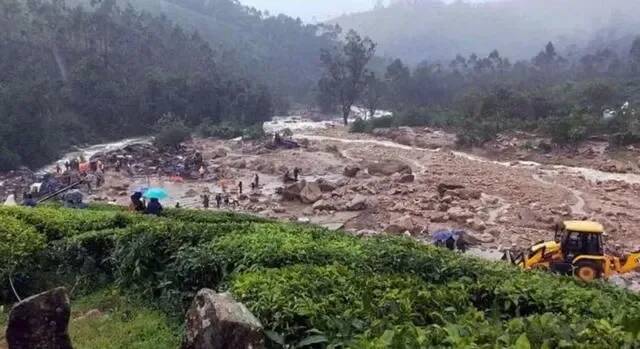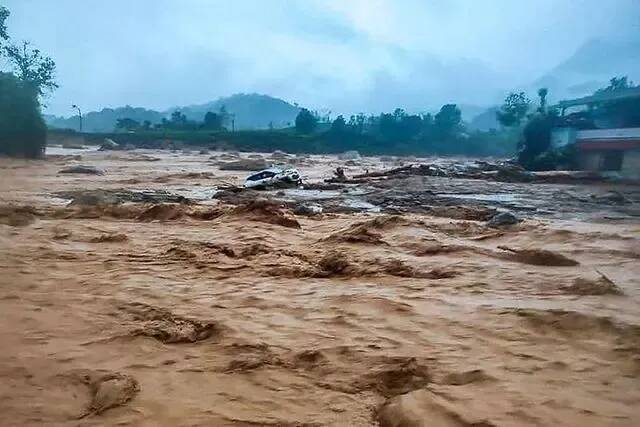Landslide in India's coffee-producing state of Kerala kills 358 people
According to Indian media reports, a large-scale landslide occurred in the Vayanad area of Kerala, India. According to the latest statistics, the landslide accident has caused 358 deaths and serious economic losses.

According to reports, this time in the early morning of July 30, landslides occurred in many places due to continuous heavy rainfall in the Vayanad area of Kerala, India. By August 1 local time, a total of 295 people had been killed, more than 200 people had been injured, and another 240 people had disappeared. Moreover, due to continuous rainfall in the incident area, some roads were washed out, so the rescue work encountered great difficulties.
At present, the local government has launched a rescue operation and dispatched helicopters to participate in the rescue. However, because the location is in the mountainous area and the roads are blocked, the rescue has become more difficult. Moreover, according to the local meteorological department, there will still be large areas of heavy rainfall in the future, and there will be "heavy to extremely heavy rains", which will bring great difficulties to rescue work.

It is understood that India is the monsoon rainy season from June to September every year. Thunderstorms occur frequently, and disasters such as floods, mudslides, and landslides occur frequently. And in early July, Bihar, India, suffered heavy rain and lightning weather. A total of 19 people were killed and 7 others were injured due to lightning strikes. Heavy rain and lightning warnings have been issued locally.
According to local experts, the occurrence of serious landslides in the area is closely related to the intensification of global climate change this year. Due to frequent heavy rainfall and the intensification of land development, the natural environment of the mountainous areas has been greatly damaged, resulting in mudslides, natural disasters such as landslides occur frequently.
Moreover, the accident occurred in the Vayanad region of Kerala, located in southwest India. It is one of India's main coffee producing areas and a producing area with a large number of coffee production. Arabica is planted in higher altitudes. Outside of Bica, Robusta is basically planted. Moreover, Robsta accounts for more than 70% of India's coffee production, and the harvest period of Robsta in the new season is from December to February of the following year. Therefore, current weather conditions are crucial to determining Robsta's production in the new season., and the current heavy rainfall and landslides will severely reduce coffee production.
According to earlier Indian coffee reports, India's coffee production in the 2024/25 marketing year is expected to be approximately 6 million bags of 60 kilograms of coffee beans, of which Arabica is estimated to be 1.4 million bags of 69 kilograms of coffee, and Robusta estimates 4.6 million bags of 60 kilograms of coffee.
In June, India released a coffee export report. In the first half of 2024, India's coffee exports increased by 13% year-on-year to 244,000 tons, and its share of export revenue increased by 43% to US$926 million. Among them, Robusta coffee exports increased significantly, due to Robusta producing countries in Asia such as Vietnam and Indonesia reporting production cuts, while Brazil is in the harvest season, so coffee buyers are turning to Robusta, India.
In addition, EUDR (European Union No Deforestation Regulation) will be officially implemented at the end of this year, and European traders and roasters will hoard coffee beans on a large scale. At present, major coffee countries such as Brazil, Vietnam and Indonesia have reported reduced coffee production. Coffee industry insiders believe that international coffee prices will remain high until the end of this year.
Important Notice :
前街咖啡 FrontStreet Coffee has moved to new addredd:
FrontStreet Coffee Address: 315,Donghua East Road,GuangZhou
Tel:020 38364473
- Prev

How to adjust the grinding of espresso coffee? How should I plan for early adjustment of coffee stores? How to make espresso in three hands?
Because the coffee bean itself will be affected by the external environment and the loss of its own gas, its state will constantly change from time to time, which will change the taste of coffee extracted with the same parameters. In order to make the coffee extracted the next day as delicious as the previous day, then the espresso blend for the morning shift
- Next

Introduction to Kilimanjaro, a coffee producing area in Tanzania, Africa
Africa is located in the western part of the Eastern Hemisphere and is the second largest continent in the world. The terrain is dominated by plateaus, which accounts for more than 60% of Africa's area. Therefore, the average altitude of the African continent is 750 meters. In the East African region of Africa, there is the Ethiopian Plateau, known as the roof of Africa, the East African Plateau, and the East African Great Rift Valley runs through East Africa.
Related
- Being chased out of the rain in front of Starbucks?! Store: Sheltering from rain under umbrellas poses a safety hazard
- The white moonlight has changed?! Lucky launches "Big Winter Pear American"
- Hand-brewed coffee three-stage method, high-sweet and universal brewing method to share! What does the high sweet water level of hand-brewed coffee mean?
- What is the difference between raw, refined and full espresso coffee? How to extract espresso and taste good?
- A complete list of coffee bean names and their meanings! What is Yejia Shefi coffee? Where is Mantelin coffee?
- What grade does Arida Manor Kaduai coffee beans belong to? What treatment is Arida ASD slow anaerobic sun exposure?
- The milk tea cup becomes smaller?! Overlord Tea Girl launches a new "Return to Yunnan" series
- Accused of selling counterfeit and high-priced coffee beans! Well-known boutique coffee brand "Oukelao" bowed and apologized!
- How to make espresso dumplings? Can I eat coffee and glutinous rice balls together?
- Save the unformed and stagnant powder cakes in one second! What is the problem with stagnant water in the powder bowl of the espresso machine?

